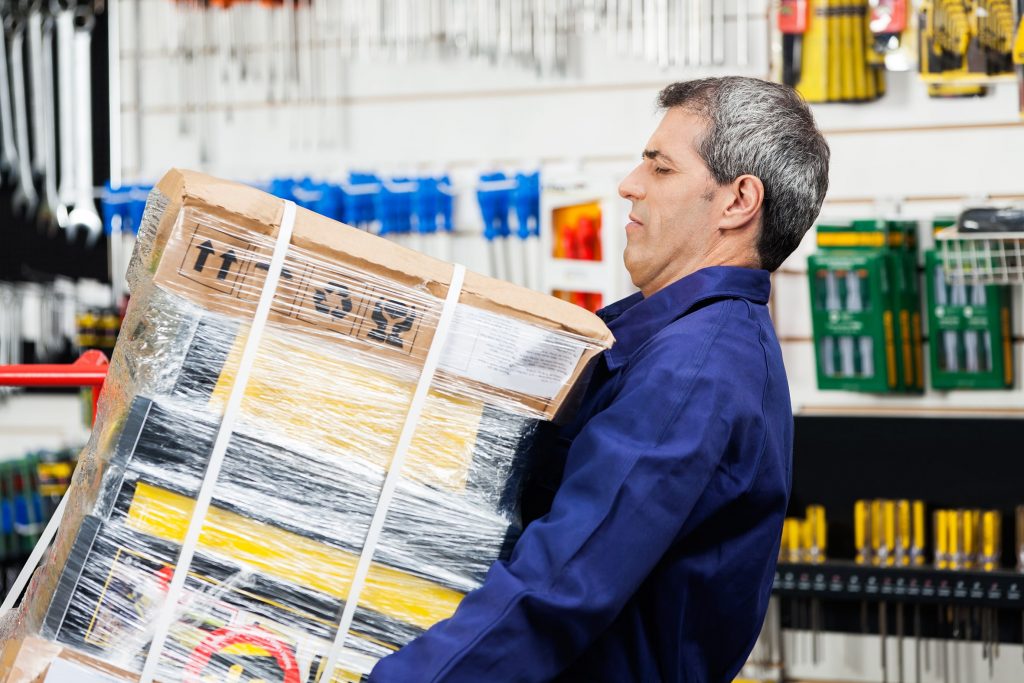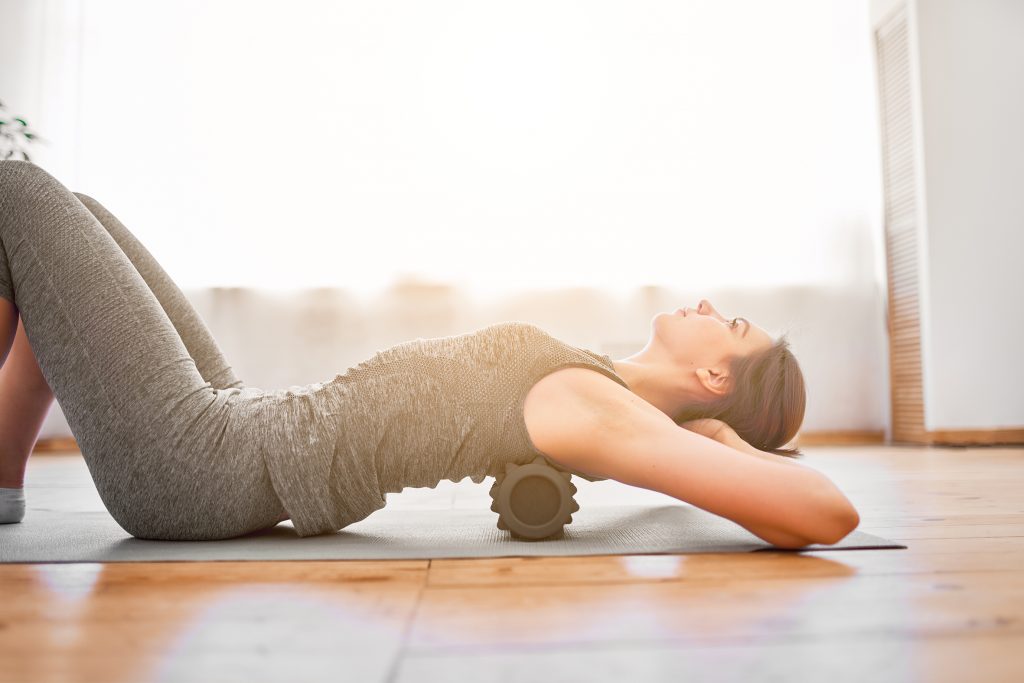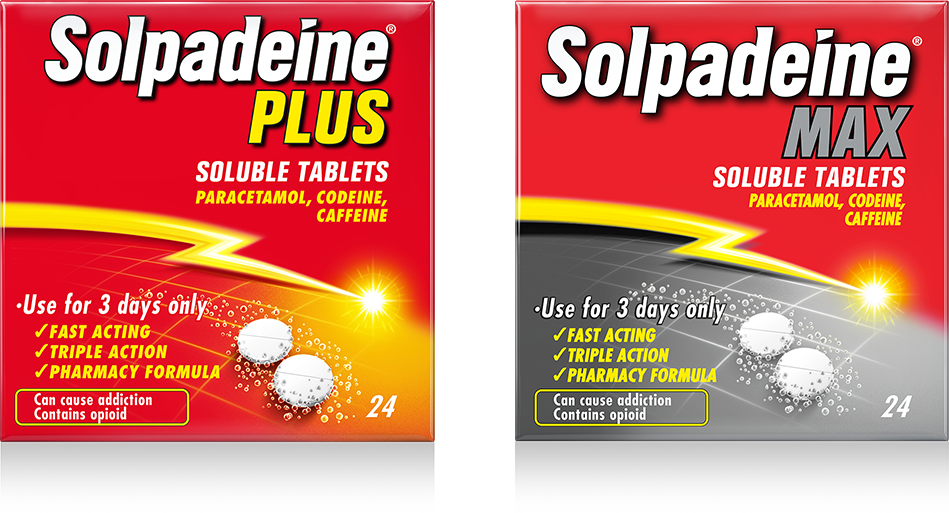What is back pain?
Back pain can be felt at any point along the spine, which stretches from the neck down to the hips. All back pain is very common, but low back pain tends to be the type that people suffer from most frequently.1
Back pain causes
The causes of back pain can be split into the following categories:1
• Non-specific – pain comes on without there being a clear cause
• Sprain or strain – an injury caused by physical activity or over-exertion
• Slipped (prolapsed) disc – a disc of cartilage in the spine is pressing on a nerve
• Sciatica – nerve irritation that runs from the pelvis down to the feet
A slipped disc or sciatica can cause more symptoms than just back pain, including numbness, weakness and tingling.1
What about arthritis and back pain?2
While most back pain, as unpleasant and debilitating as it might be, is only short term, some people have daily back pain caused by arthritis. The lower back is the most commonly affected area.

• Axial spondyloarthritis
This tends to affect the hips and the sacroiliac joint (the one that connects the spine to the pelvis). This would be diagnosed with either an X-ray or MRI scan
• Osteoarthritis
Also known as ‘wear and tear’ arthritis, it’s cause by the breakdown of cartilage. Cartilage cushions the ends of bones and without it, the bones rub together, causing stiffness, pain and lack of mobility. Bones can grow spurs which can press on nerves, causing aggravation
• Psoriatic arthritis
People with psoriasis can also develop arthritis, because psoriasis can affect the joints as well as the skin. In psoriatic arthritis, there can be overgrowth of the bones, which can fuse vertebrae together, which causes stiffness
• Reactive arthritis
This can be the result of an infection and can affect the sacroiliac joint, at the bottom of the spine
• Enteropathic arthritis
People with types of irritable bowel disease sometimes get this in the sacroiliac joint, which can give them low back pain
• Spinal stenosis
This is cause by overgrowth of the vertebrae and thickening of the ligaments. The overgrowth can cause the spinal column to narrow and press on its own nerves. This can cause low back pain, pain or numbness in the legs and bowel problems
Always consult your GP, in the first instance, if you think that you may have a form of arthritis that’s causing you back pain. They can assess you and they may refer you to an orthopaedist or rheumatologist if they think there may be a type of underlying arthritis.
Back pain types
Types of back pain range from non-specific (no known cause) to injury- or nerve-related, to pain caused by an arthritic condition. See causes for details on the different types of back pain.
Back pain symptoms
Symptoms of back pain can vary greatly, but can include:3
• Stiffness – mobility may be reduced
• Spasms – muscles can twinge and feel very painful when trying to carry out normal activities
• Heat or burning – this can radiate into one or both legs
• Shooting or stabbing – again this can spread down into one or both legs
• Pins and needles – this can point to nerve irritation
Back pain relief
There are various things you can do to try and prevent you experiencing back pain, or to relieve it if you have it.3

Many of us have desk jobs, or jobs where we are sitting for long periods, including if a lot of driving is involved. If you can, you should make sure you get up and move around regularly, as the cumulative effect of sitting for too long without getting up can cause a lot of stiffness and, potentially, pain.3
Strong muscles around the waist can help to prevent back problems. If you are overweight around the middle, or lacking muscles around your core, your back is more vulnerable to pain. Look for activities that strengthen your core muscles. Pilates is a great example.1 The best way to learn pilates is in a class with an instructor, as they tend to have a small number of people per class so that they can make sure you are performing the exercises correctly and within your level of ability. You can gradually build up strength over time, and learn about holding yourself correctly. Having a good posture can also help avoid back problems.
Even if it’s just a walk at lunchtime or after work, it can make all the difference. It can really loosen stiff muscles and help you relax. Other exercise, such as swimming, can be great for your back.1
Heat or ice packs can really help, depending on where the pain is and the type of pain. For example, if you have low back pain radiating into the legs and even down to the feet, you may have some nerve irritation. Reducing any inflammation with an ice pack can help to ease this. If you’re unsure about whether to use heat or cold, you should talk to a healthcare professional, such as an osteopath or your GP. And remember not to apply ice packs directly to the skin – wrap them in a cloth or towel.1
Pain relief, such as ibuprofen or paracetamol may help, if keeping mobile and the use of heat or cold isn’t working.
‘TENS’ stands for transcutaneous electronic nerve stimulation. Many people find TENS machines very helpful at alleviating pain or causing a distraction from it. You can buy them in pharmacies and, after placing small adhesive pads onto the affected area, you can control the electrical pulses that go to the site of pain. TENS machines come with full instructions and are easy to use once you get the hang of them.1
If you find that your back pain is so bad that you are struggling to perform every day tasks, you should make an appointment to see your GP and/or an osteopath, as you may need stronger painkillers and muscle relaxants for the short-term, and an osteopath may be able to diagnose exactly what issue you are having and help to relieve your symptoms through some gentle manipulation. They can also show you exercises specific to your condition that can help you to recover.1
Surgery for back pain would usually be a last resort, if all else has failed and a person is finding that they cannot get on with their everyday life. It would generally only be for a specific medical cause of back pain, such as sciatica or a slipped (prolapsed) disc. Your GP would assess your situation and refer you onto a specialist if they thought that surgery might be the right option for you.1
In most cases back pain isn’t caused by anything serious and will usually get better over time.1 Your pharmacist can advise you on pain relief for back pain, such as trying Solpadeine Plus or Solpadeine Max. If your pain is ongoing or worsens, you should see your GP, and you may need further support such as physiotherapy.
Treat my pain
The Solpadeine range of clinically proven dual and triple action painkillers deliver pain relief when you need it most

References:
1. NHS: Back pain. Available at: https://www.nhs.uk/conditions/back-pain/ Accessed July 2021.
2. Arthritis Foundation. When Back Pain May Mean Arthritis. Available at: https://www.arthritis.org/health-wellness/about-arthritis/where-it-hurts/when-back-pain-may-mean-arthritis Accessed July 2021.
3. NHS Inform Scotland. Back problems. Available at: https://www.nhsinform.scot/illnesses-and-conditions/muscle-bone-and-joints/self-management-advice/back-problems Accessed July 2021.
Solpadeine® Max Soluble Tablets, Paracetamol 500mg, Codeine Phosphate Hemihydrate 12.8mg, Caffeine 30mg For the treatment of acute moderate pain which is not relieved by paracetamol or ibuprofen alone. Contains codeine. Can cause addiction. Use for 3 days only. Always read the leaflet.
Solpadeine® Headache Soluble Tablets contain Paracetamol and Caffeine – a mild analgesic and antipyretic formulated to give extra pain relief. Always read the leaflet.
Solpadeine® Plus, Solpadeine® Max and Solpadeine® Headache products are not recommended for children under 12 years of age.
SolpaOne® 1000mg Effervescent Tablets contains paracetamol only. For the treatment of mild to moderate pain and/or fever. For adults and adolescents over 50kg of body weight aged 16 years and above. Always read the leaflet.

